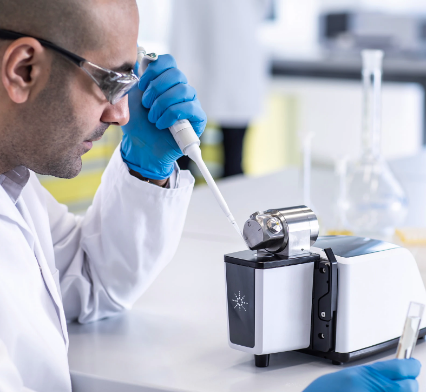
image credit- Agilent
Agilent Technologies Inc. has announced that researchers at the Indian Institute of Technology Bombay (IIT-B) and the QIMR Berghofer Medical Research Institute in Australia have developed a rapid method for differentiating COVID-19-positive patients expected to show severe symptoms from those likely to experience only mild symptoms.
The classification algorithm, published in the journal Analytical Chemistry, is based on infrared spectra of blood plasma, acquired on an Agilent Cary 630 FTIR Spectrometer.
“2021 has opened new avenues for Agilent to work with industry and academia partners and contribute towards their research through the implementation of technological advancements, highly skilled applications, and expert support team utilization, said Samir Vyas, Country Manager for Agilent in India.
In the study, the researchers collected infrared spectra of blood plasma from 160 COVID-positive patients from Mumbai (130 as a training set for model development and 30 as a blind test set for model validation).
The spectra, collected on a Cary 630 FTIR spectrometer equipped with a diamond-attenuated total reflectance (ATR) sampling module, revealed slight but observable differences between severe and non-severe COVID-19 patient samples.
Professor Sanjeeva Srivastava from the Indian Institute of Technology Bombay said: “We found that having diabetes was a key predictor of becoming severely unwell in this group of patients, so we fed clinical parameters such as age, sex, diabetes mellitus, and hypertension into the algorithm. We then tested the algorithm on blood samples from a separate group of 30 patients from Mumbai and found it was 69.2% specific and 94.1% sensitive in predicting which patients would become severely ill.”
“However, it did result in more ‘false positives’ than predictions that were based solely on the clinical risk factors of age, sex, hypertension, and diabetes. We hope that with more testing, we can reduce these false positives,” Professor Srivastava further explained.




